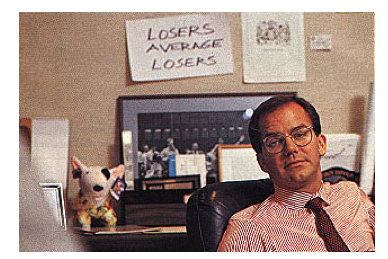Options trading is a powerful investing strategy. How powerful? Powerful enough to protect your portfolio from the most powerful man in America. Let me explain…
In the last two weeks, President-elect Donald Trump has sent Tweets targeting Boeing (BA), United Technologies (UTX) and Rexnord (RXN). Though Trump isn’t President yet, he’s already moving stocks and sectors via his Twitter account!
Here’s the Tweet that Donald Trump sent on December 6:
“Boeing is building a brand new 747 Air Force One for future presidents, but costs are out of control, more than $4 billion. Cancel order!”

Read Your Free Report Here.

Read Your Free Report Here.

Read Your Free Report Here.

Read Your Free Report Here.
And on December 2, Trump sent the following message aimed at Rexnord:
“Rexnord of Indiana is moving to Mexico and rather viciously firing all of its 300 workers. This is happening all over our country. No more!”
On November 24, the President-elect hinted at a deal with United Technologies:
“I am working hard, even on Thanksgiving, trying to get Carrier A.C. Company to stay in the U.S. (Indiana). MAKING PROGRESS - Will know soon!”
And the biggest warning shot Trump took at American companies came on December 4 via six Tweets in a span of 45 minutes:
“The U.S. is going to substantially reduce taxes and regulations on businesses, but any business that leaves our country for another country, fires its employees, builds a new factory or plant in the other country, and then thinks it will sell its product back into the U.S. without retribution or consequence, is WRONG! There will be a tax on our soon to be strong border of 35% for these companies wanting to sell their product, cars, A.C. units etc., back across the border. This tax will make leaving financially difficult, but these companies are able to move between all 50 states, with no tax or tariff being charged. Please be forewarned prior to making a very expensive mistake! THE UNITED STATES IS OPEN FOR BUSINESS”
Clearly there is now the risk that a Trump Tweet sent without warning could sink the shares of a holding of yours. And really, would it shock you if one day he took a shot at a Facebook (FB), Apple (AAPL) or Tesla Motors (TSLA)?
So how could you handle it if Trump went after one of your holdings and turned it into a losing position?
First off, don’t panic and sell right away. Instead, I would look to the options trading market to get a feel for how the hedge funds and institutions are trading following this news.
The options market is where I get my clues about how the biggest traders are positioning themselves. And when I do have a stock go against me, I continue to monitor the options trading market to get a feel for the bullish and bearish positioning.
In the case of Boeing, United Technologies and Rexnord following the Tweets, hedge funds and institutions were not aggressively buying puts—indicating that a big fall wasn’t anticipated.
Here’s how I looked to the options trading market when one of our positions was down.
One of our Cabot Options Trader holdings, a Microsoft (MSFT) call, was down along with the technology sector and sitting at a small loss.
A subscriber asked me in an email, “The calls we bought are down $0.25, should we buy more?” My answer was the same as always: “I NEVER double down on a trade!”
If I’m going to be wrong (and I’m not worried about the MSFT trade yet), I’m only going to be wrong once. Here is a picture of famed trader Paul Tudor Jones in his office. On the wall behind him is a saying that many top traders adhere to “Losers Average Losers.”
(By no means am I calling the emailer a loser! Everyone has their own trading styles and rules. And it’s always your choice if you want to buy more of a losing position. I know plenty of Cabot readers who double down—sometimes it works, and other times, not so much. However, I never will.)
But I continue to check the option order flow. For now, the bullish option order flow remains very strong in MSFT, so I will hold my position.
That said, clearly I bought the MSFT call too early. And that’s okay. All honest traders will tell you that picking the market’s or a stock’s bottom or top is impossible, especially in a market like the current one that’s seeing intense sector rotation. While I would like all trades to work quickly, I don’t get too worked up about short-term price swings.
And though it’s painful at times, I also don’t beat myself up too badly if I decide not to enter into a trade because it doesn’t meet my criteria.
Here’s an example of a trade I missed.
Cognizant Technology Solutions (CTSH) had been on my radar for the past month because a trader had bought over 30,000 April 55 Calls in late October. However, 20,000 of these calls were bought right before the company reported earnings, so I decided to pass on a trade. Earnings passed, the stock barely moved, and I figured the trade was likely going to be a losing earnings trade for the buyer.
But, just recently, activist investor Elliott Management published a letter it had sent to the board of Cognizant Technology Solutions noting the stock’s underperformance and suggesting steps to create value. In the letter, Elliott noted that the company could achieve a value of 80 to 90 per share by the end of 2017. The letter caused the stock to jump from a close at 53.25 to 57.15 the next afternoon.
So it now appears that the buyer of the April 55 Calls was Elliott Management, and they weren’t targeting an earnings trade.
There is always the risk of missing out on the next big winner and timing risk like MSFT, and now, there’s Trump Risk. But by watching options order flow, you can see what the hedge funds and institutions are doing, and by buying or selling options, you can gain along with them and protect the stocks you own.


